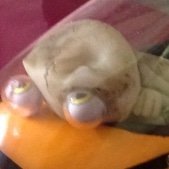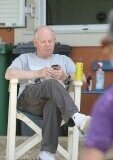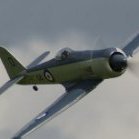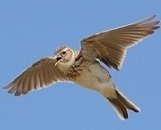Search the Community
Showing results for 'ceconite'.
-

Covering undercambered wings. Dennis Bryant SE5a.
Don Fry replied to Albert Ace's topic in Scale Matters
First off, an assumption there is a spar on the underside, near the lowest part of of the chord. So far, I’ve not found a wing that hasn't. Paint this spar with Balsaloc or Impex fast tack interlining glue (haberdashery shops). IF the fabric has not got a heat sealed glue, you need to paint all of underside structure. Leave to dry, then tack the fabric to the low spar. Then run over it again with the heel of the iron. Good tack, all the spar surface. Now, note well, when you do the rest of the surface, it will try to pull the fabric off the spar, get heat on the spar and the joint will fail. So I pin a spar sizes bit of wood, foam, whatever on the spar, can’t mess it up then. And then do the rest, front or back half first. Remove when finished. If using Solatex self glued type fabric, tack the fabric is the same. You can skip the Impex, but I don’t. I still use the protective temporary false spar. I use Ceconite (LAS). I don’t like the glue system. Smelly, messy, and I find just not needed on small aircraft like ours. I seal it with non shrinking dope. Reads more difficult as it is in practice. -
Diacov (Sarik) is the covering with a heat activated adhesive backing, so applied in a similar manner to Solartex. Diatex 1000 is the same material but without the adhesive, so is applied in the same way as Koverall. Ceconite is similar I believe. It can be obtained from full-size aviation suppliers, and comes in a width of a couple of yards. When applying Diacov, and presumably Diatex, you will need a few new knife blades. As soon as the blade gets slightly dulled the material doesn’t cut cleanly, and frays, giving a ‘hairy’ edge. Brian.
-
Track down some uncertified ceconite from a full-size aviation supplier or aircraft workshop. Made from same material as koverall, but with a tighter weave so easier to fill/paint.
-
Ceconite is glued to the structure & doped after it is applied. From Ceconite's Website: The adhesive & finish on models may be less critical than those quoted above but there is a bit more to its application than there is for dedicated model coverings. Ceconite is deservedly popular on full size light aircraft but the steps in its application has led to varieties of modelling Oratex being used as an alternative in the full size world. https://www.betteraircraftfabric.com "Oratex represents a major breakthrough in aircraft fabric covering systems. No solvents, no paint, no stench, no exposure to toxic chemicals of any kind. Just glue it, shrink it, and fly! Easy and Fun to Apply Covering an airplane used to be a long and involved process. Oratex is different. The builder doesn't need to apply any coatings at all. Just glue it, shrink it, and you're done! Covering with Oratex is fun! Covering with the legacy systems is nasty! Prolonged exposure to dangerous chemicals and hours of tedious sanding, always working with a respirator and protective clothing."
-
I have had a hankering for one of these for many years, as one of my first flights was in an Auster, a friend of the family also had one, and my Dad learned to fly in one. Luckily one appeared on the BMFA for sale site, and I snapped it up. I also felt that I might use this model as a way to test some new stuff for the column, so hopefully it will let me try Ceconite as a covering, some vector board to simulate the interior leather, and probably the most taxing to try and see if I can make an IC engine work reliably. I had really wanted a Laser 80 but as the factory isn't selling any, and that's the third time I have attempted to buy a Laser, I snapped the hand of a fellow forumite and bought a brand new un-run Saito 82b. So I will no doubt be asking lots of you fossil fuel guys loads of questions along the way. I wont go mad with the detailing, but you know me I always say that!
-
All the cowls have now been filled, primed again and rubbed down. The next step will be a coat of 2K primer sprayed on but, as I have no indoor spray capabilities, that requires dryer and warmer weather so the job is on hold. On then to covering the wings. I'm using Sig Koverall, this is a polyester heat shrinkable fabric similar to Ceconite and Diatex. None of these have any adhesive or colour pigment applied as purchased and to my mind are preferable to those that do. Koverall, at 1.5 oz/yd2 is lighter than Ceconite Lightweight (1.87 oz/yd2) and Diatex 1000 (1.73 oz/yd2) but requires more dope to fill the weave so perhaps there is little eventual weight savings. Being a slightly looser weave allows it to follow curves more easily, though when the time comes to apply the first coat of dope, care must to taken not to push the dope through the fabric and form drips or puddles on the inside. All is not lost should this happen as a few coats of thinner applied over the area plus the application of a vacuum cleaner head will suck the blobs back through the fabric. It could be argued that blobs on the inside cannot be seen, but they can once a gloss finish has been applied, the blobs form raised bumps on the outside which, if an attempt to rub them down is made, can easily end up cutting the fabric – best to remove the bumps with thinners before painting. Patches of Koverall (left) and lightweight Ceconite for a comparison. The slightly more open weave and thinner fabric of Koverall can be seen in this picture The covering is applied using fabric cement, thinned with the proper cement reducer. Fabric cement is purpose made for the job and is much easier to use that dope as the adhesive. A small quantity of the cement is first thinned approximately 30% with the reducer to produce a fairly thick liquid which is then applied, twice, with a brush all around the edge of the surface to be covered and anywhere where there is a concave surface. These wings are slightly undercambered so cement must be applied to all the rib caps. I find it easier to cover the top and bottom separately, (this is a top). Here a piece of covering, cut oversize, is placed in position. Another bottle of cement is thinned 50/50, this makes the cement penetrate the fabric and adhere itself to the cement previously applied to the wood. At this point the covering is well and truly stuck down. Small areas can be repositioned if necessary by softening the cement with a fresh application. The benefits of this material over prefinished cloths become obvious when its realised that the cement and subsequent dope penetrate the fabric rather than just sitting on the surface, waiting to let go or fall off in flakes! Where the fabric needs to be cut to clear projections, in this case for the rigging supports, its easier to apply patches first and then cut oversized holes in the main fabric. This allows the fabric to be positioned clear of the projections and taughtened by hand as the cement is applied without having to be too precise in where the cuts would have to be made if all done in one piece. Trying to stretch the fabric over this type of projection would have left unsightly gaps so much better to cover this small section first. Here a small patch has been stuck on, the main cover then has a hole cut out, placed over the wing in roughly the right position The covering is then cemented and shrunk. Once doped and some filler primer applied, the cut edge will be invisible.
-
Some size "0" zips arrived today, I think I can do something with them..... Set the garage up for spraying and coat some primer on the model. I am concerned as the Solartex rib tapes have not adhered well to the doped Ceconite. But in a way that's what the primer coat is for, to highlight problems. Now I have a blank canvas to work too. Wings are also done, just not much to see but more greyness! I am still mildly concerned about paint bonding, never an issue before but this Ceconite worries me.... Cheers Danny
-

Vailly FW 190 1/4.5 (Nick Somerville)
john stones 1 - Moderator replied to Nick Somerville's topic in Scale Matters
Mates that build large scale use Ceconite, some chat in here Nick. https://www.modelflying.co.uk/forums/index.php?/search/&q=ceconite&quick=1 -
I think Don answered how it's used a few days ago. There are 'Engineers Notes' about using Ceconite here - it would seem that this applies to models just the same way. At £9.49 a yard plus VAT and shipping it seems cheap because it's 70 inches wide while Solartex and most others are only about 24 inches wide. It says Lightweight Ceconite is 1.8 ounces per square yard which seems light enough. The question is why haven't we known and used this for years instead of Solartex?
-
Using Acrylics paints.
Dale Bradly replied to Basil's topic in Building from Traditional Kits and Plans
Big fan here, for sport scale models. They are cheap, easy (forgiving) to spray, and you can get in any colour you like. Ref below: chipmunk red, white, grey over ceconite and epoxy fibreglass; Russian spit green and grey undersides over epoxy fibreglass and overcoated with flat clear spay can enamel; PR Spit blue all over over wbpu and over coated with 2k clear for glow fuel proofing; and tiger moth cream sides (ceconite) over coated with 1k automotive gloss clear. all these mentioned colours are hardware store acrylic mixed to colours of my choosing, in a mix of resene, Val spar and who knows what else. I thin the paint to the consistency of full cream milk with plain tap water, and spray with a cheap mini 125ml hvlp touch up gun, as found on ebay for around 15-20 pounds, e.g. Link Unless you're aiming for top level sCale, why not? -
So the secret to this working or not is the thickness of the ply, plus two layers of Ceconite as it is wrapped around the edge to give a nice finish. I think it will work just fine. I doped the Ceconite to the ply, making sure no trapped air bubbles, but then used BalsaLoc to seal the folded edges. The combination seems to have worked well. I am now debating the material to affix the doors. Medium CA would work but its very permanent, there again that's what I want I suppose? Ply cut and Ceconite doped on, the edges were then trimmed. Edges sealed with BalsaLoc Now I have proven that it seems to work, I just have to make another for the pilots side. Cheers Danny
-
Well some progress. I tried silk over tissue and that got ripped off, this poor rudder has been through the wars, and took a fair bit of sanding to get it back to useable. A quick chat with modelling chum Simon Lawson who uses Ceconite said he uses dope to stick it down. I told him i couldnt get it to stick. Anyway long story short, you have to put two good coats of dope on the airframe. Then lay the ceconite on the structure and use thinners through the Ceconite to soften the dope below. And what do you know, it works really well! Pics when back at my pc later. Cheers Danny
-
So a very enjoyable few hours faffing about, with little to show for it. Anyway to cut a long story short even my "neat" LAS dope would not stick it to the airframe. The official product for attaching Ceconite to metal, wood and itself is their "super seam cement" It is £25 a quart, and if I do order some Ceconite I may add some to the order. However, for now I am going to try Balsaloc. Makes you realise how good an idea it is to put the iron on adhesive on the back of the film. However Ceconite has serious shrink, and doesn't sag, so maybe the hassle will be worth it. So a layer of Balsaloc on the rudder, once dry I will give it a go. Cheers Danny
-

KK Falcon Covering
Don Fry replied to Skippers Walker's topic in Building from Traditional Kits and Plans
Or doculam film, with doped tissue. My version will be electric, with a load of foam board for non stressed areas, ie most of the substructures. I no longer run IC motors that small, foam is lighter. Tempted to use ceconite, and spray it with non shrink dope, and paint as needed. No fuel problems with my envisaged heresy. Childhood dream, might as well lay it to rest. -
Forum members' new models: Let's see them.
Dale Bradly replied to Paul Marsh's topic in All Things Model Flying
Had a successful day, so better share these. These are all models i have completed this year, and very pleased with. The Chipmunk is an old Airsail kit i acquired online, had much fun building. Flies on 5S. 'Glassed fuse, and Ceconite wing/control surfaces. All the old comments of a brilliant handling plane see to be true, flies very well. The small Spit is from the Dark Nights thread, (TN 46"). Possibly my current favourite model after about 4 flights since rebuild. The big Spit is a Brian Taylor, (https://www.sarikhobbies.com/product/supermarine-spitfire-2/) I acquired it 90% built, and have completed it as shown. The plan had fixed gear, but have managed to get retracts into it. A pointed rudder (cause i prefer them) and even clipped the wings!* (purists look away now), and to make another change from RAF camo, made up some Russian markings. Glassed all over (except Ceconite elevator & rudder). 6S for power. Had it's maiden today, it certainly flew, and despite it's weight (probably around 5kg) seemed to fly well, and landing speed wasn't excessive. Some minor things to sort, but the signs are good, so i'm much pleased. (And it might be obvious i can't be bothered with cockpits!) *I kept the the solid balsa tips that i cut off, and made a removeable fairing to go on their place on the wingtip. I can change between fullspan and clipped wingtip at leasure when ive got it dialled in. (Much like the fullsize!) Not for any useful purpose, other than to say I can, and compare the handling. -
Other door went well. I learned that thin CA is not the glue for Ceconite to Ceconite, however medium worked very well. I find the same with lite ply (which I don't like to use) medium works well thin just seems to wick away too much. Anyway the doors are both on and had two coats of 50/50 dope. We will have to see how they look with some paint, but for now its time for the tail-plane and elevators to be fitted. Cheers Danny
-
Managed to do the other side, did a better job than the first. But corrected the error on the first, by running another strip of Ceconite from the lower stringer to the bottom. Once tapes are added hopefully it wont be noticeable. Added the first coat of dope. I am concerned about how little this Ceconite is shrinking, and more alarming perhaps is how it is relaxing as soon as it cools. The dope gets the tension back into the fabric, but its still strange. That gap between the tail-plane and the fuselage (as per the full size) has taken a great deal of effort to achieve, but I think it will be worth it. So that's a bit of a milestone I guess, still a long way to go......
-
Hi Bas, there are two types of cellulose based dopes in modelling, shrinking and non shrinking. And if you include full size dopes there is also low taut, which is what I am using here. You may hear of banana oil which is basically a none shrinking dope with additional plasticers such as castor oil. The polyester covering i am using is Ceconite, which is a lightweight covering used on full size aircraft. The weave is very fine and as I am using dope to stick the fabric down it does not soak through as well as an open tissue or silk. So you need the dope to soak through from the airframe side too. The prior coats do two things, fluffs up and locks the balsa fibers so that some 800 grit will make the wood super smooth. The other reason is dope applied on the top soaks through and softens the underlying dope. Giving a better chance at sticking it down. I must say i am not finding the Ceconite is shrinking much with heat, the LAS instructions say 114 degrees max, but I am unable to get creases out at that. 120 its better, but would be curious what others are using? I have not tried water based dope, as I am sticking with what I like. Solvent based can be lifted and re stuck ? Cheers Danny
-
Okay pics as promised. I know I didn't really want a heat shrink film but this I am hoping is a happy compromise. I managed to get the Ceconite to work really well, and once you have figured it out (thanks for the leg up Simon) its a doddle. There is a trick to doing compound curves, but I have been advised by my lawyer not to tell anybody ? so if you want to know you better PM me ? I guess many will say why not just use Oratex, and you are right, it will be heavier but not by much, It will hopefully not sag like some others, what does it for me is the edges, they are much thinner and flatter against the structure. And of course Ceconite is a great deal cheaper. I think I may place an order with LAS for enough to do the whole model. Cheers Danny
-
Lightweight ceconite, when doped and painted is a replacement for Solartex. It’s a heat shrink fabric. LAS aerospace give instructions for use. They do a glue for it but it’s expensive, messy, stinks. Balsaloc is fine.
-
Ceconite Fabric LAS Aerospace Ltd that's a good bit of info Don. ?
-
Thanks Everyone who replied to my enquiry. Engine Doctor and PDT, you've got me thinking about tissue and dope again. Thank you Don, haven't heard of Ceconite before, what is it, where can you buy it please ?
-
Lightweight Ceconite, from LAS aerospace. Apply using balsaloc, or heat setting interlining glue from haberdashers. Seal with non shrink dope and paint. Cheap, comes 2 meters wide, and as many years long as you want. I can’t fault the stuff where you are applying paint anyway.
-
Airsail - Dehavilland Chipmunk Kit
Dale Bradly replied to Richard Duvall's topic in Build Blogs and Kit Reviews
Built mine about a year ago, now one of my favourite models. 5S 4000, pretty sure it runs a 15x7, sorry can't recall the kVA, but it sips power and 10 min flights are no problem at 1/2-3/4 throttle. Flies what i would consider scale, where a little energy conservation is required, e.g. to loop, start from a shallow dive etc. I don't consider it a 3D machine, so don't expect it to perform like one. My advice would be, should you consider glow, a lethargic .52 4st would fly it fine, a healthy one would be magic, don't even consider anything bigger than .70. Agree re castoring tailwheel, I did this but replacing the rudder horn with one that exends from the rudder, right though the bottom of the fuse, and becomes the tailwheel strut (i think this meant moving the tailwheel location fwd), connected to a single servo via a snake, which connects to this rudder/tailwheel strut just under the rudder, above the stab, inside the vac formed platic tail fairings. A bit of fiddling during build, but a doddle to taxi now. Also angled the main gear a bit further fwd, which was simply by drilling new holes in the wooden blocks at a different angle to take the portion of the leg that pokes into the wing. (The groove the length of the block remains the same). I put the optional flaps on mine, but knowing what i do now (i.e. it really doesn't need them) i would save the weight. I would also consider remaking some of the wing ribs in balsa vs the ply they come in, as there is a small tree in the wing, especially in the centre section, she's a bit too solid! I used the supplied cowl as a plug to make fibreglass copies, not for any reason other than to learn a bit more about the process, and to "future proof" replacements if needed. I 'glassed the fuse, and the wing and all control surfaces are ceconite+dope, and finished with hardware store water based house paint. Feel free to ask any questions. -
Wow that looks ace Richard, we are going to have to be careful as to a subject. I am struggling but think I am going to do G-AGTO I believe another forum member has done Echo Echo (G-AJEE) So if we ever all get together for that formation pass we ought to try and be unique? I am pleased you got on okay with the Ceconite, it's different that's for sure. Cheers Danny






